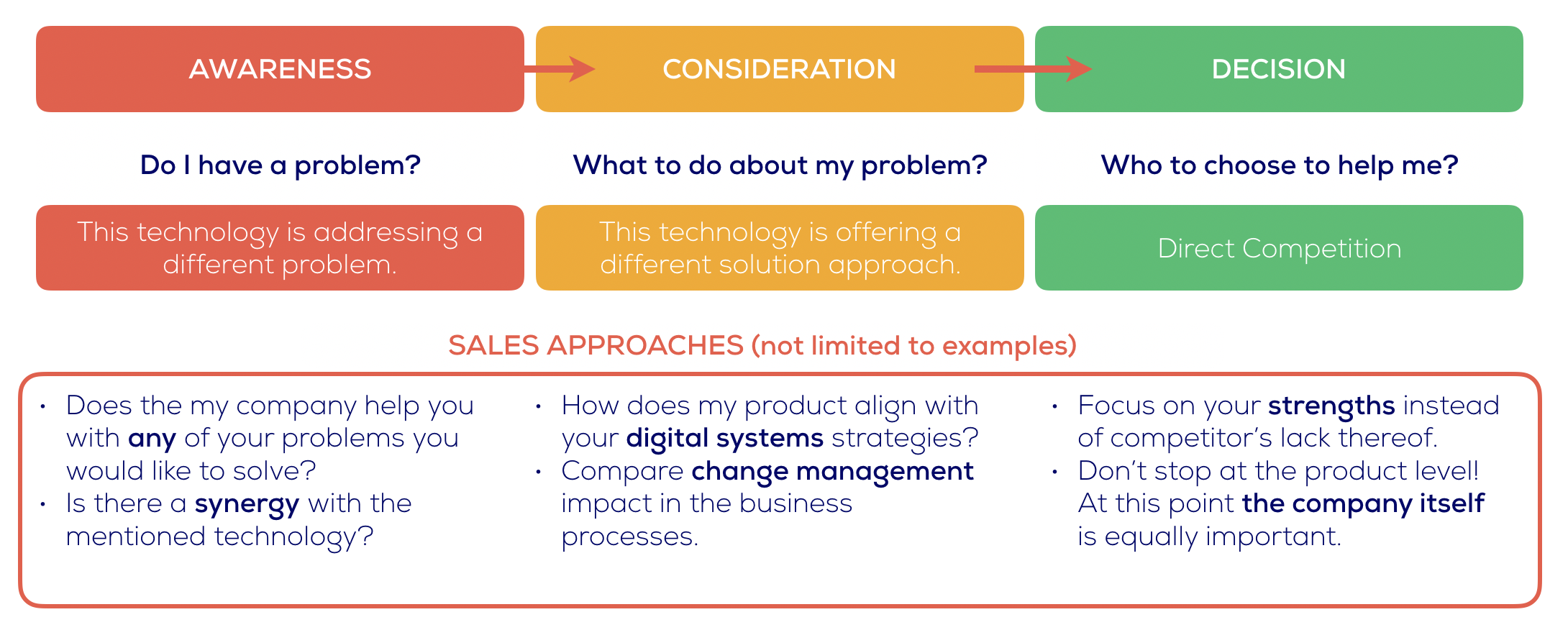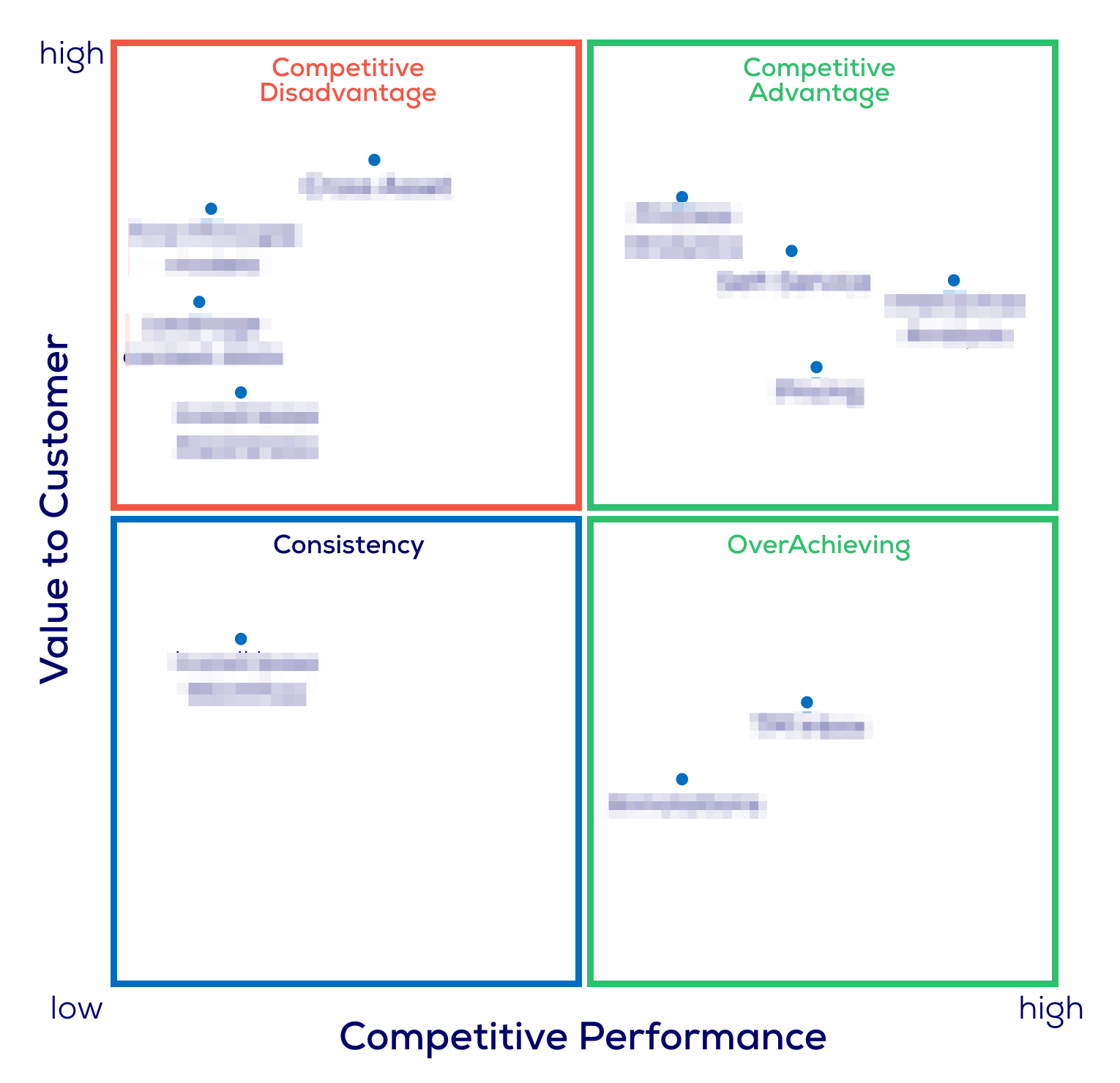Thought I’d kick it off with a little thought provoking title. Not just as clickbait because I truly believe in that statement but more about that later. But there’s much more I want to share with you today. This post has been lingering for a very long time. I’d like to share some of my strategic work on competitive analysis (see end of post for framework download)
Competitive questions are an opportunity
This is by far the most important lesson I’ve learned. The majority of sales people take a defensive role when a customer asks a competitive question. If you’re lucky some will say they cannot take a stance _against_ a specific technology/supplier/product and will redirect to their own strengths. If they are smart, they’ll use it as a tool to better understand the customer.
I have built a Competitive Analysis Framework over the last few years that helps you guiding your customer through the different cycles of the sales process using their questions about competitive positioning ;
- if the product they are asking for does not solve a problem you are solving, you need to address that first in order not to waste valuable time. This means you’re are still in the AWARENESS phase.
- if the product they are asking for is solving the problem differently than you do, it’s more worth addressing whether the type of technology fits their business. Now we have entered the CONSIDERATION phase.
- if the product is a direct competitor, we know we’re already in a decision phase where there is an agreement on the problem definition and the type of solution. now you just need to convince you are the best partner. This is when we are ready for making the right DECISION.

Important is that in both the consideration and awareness phase we will not address the competitor or the product directly but we’ll demonstrate the difference in TYPE OF TECHNOLOGY and how you believe in the method you have chosen (alongside your direct competitors) to address these issues. This approach avoids the cool-aid feeling on both sides of the table and forces you to focus on facts rather than feelings.
Competitive Positioning & Differentiation
Earlier this week, Scot Kim (Gartner) wrote a good piece on competitive positioning & differentiation. I would like to add a couple points about differentiation.
- Unique Selling Points; some things to consider when you’re doing feature analysis. Always keep both the value to customer and the time to copy in mind. Wether your USP remains unique is in 99% of cases just a matter of how hard a competitor wants to chase that specific feature. See that I was going to reuse the title? 😉 Finding the complex features with high value to customer are your sweetspot USPs that are probably worth doubling down on from a resource investment perspective.

- Go beyond features! It is of utmost importance that you use your company culture. Listening a lot to what the customers are all sayin g that _sucks_ about _everyone_ in your market and see how you can make that a competitive advantage. Copying culture is HARDER than copying features & technologies! Usually we’re talking here about pre- and post-sales customer treatment (licensing, support, feature delivery, joint innovation, … )
- Lastly; don’t forget to do a complete analysis of where your competitors strengths are against yours! A good tool here is the Matrix Of Competitive Advantage (MoCA).

The Competitive Analysis Framework
In the spirit of sharing is caring, I am honoured to share with you my complete Competitive Analysis Framework as it exists today. As it’s a living document, feel free to add your methods in the comments so I can add them!

“You keep using that word – I do not think it means what you think it means” (Princess Bride, just in case you don’t know it!)
This isn’t Competitive Intelligence as most in the industry would define it – I’d consider it solutions selling. Know the customer, align with the desired business outcomes etc. Competitive Intelligence has a more strategic focus – check out http://www.academyci.com or http://www.scip.org for examples of two industry bodies.
Correct Ed. I misused the term once in this article and will rectify. I usually use the term Competitive Analysis – as in all the other places except for that one place in this article – but it’s probably because my current company uses the term that I may have been confused. Personally I’m using Wardley maps* for example when it comes to competitive intelligence.
To your point; you are correct that this looks a lot like selling, in fact that is exactly what it was intended to be. This framework is an enhancement of where currently all you see is “battlecards”.
Link to Warley Maps: https://medium.com/wardleymaps/on-being-lost-2ef5f05eb1ec